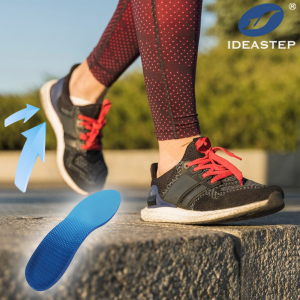
Insoles come in a variety of materials, including soft and hard soles. Both types of insoles have their own unique benefits and drawbacks, so it’s important to choose the right one for your specific needs. In this article, we’ll explore the differences between soft and hard sole insoles, and discuss which type might be best for you.
Soft Sole Insoles
Soft sole insoles are made from materials such as memory foam and gel, which provide a comfortable, cushioned feel. These insoles are often recommended for people who are looking for a more comfortable fit, or those who want to reduce pressure on their feet. Some benefits of soft sole insoles include:
- Comfort: Soft sole insoles provide a comfortable, cushioned fit, reducing pressure on the foot and providing a more relaxed feel.
- Customization: Soft sole insoles can be molded to fit each individual’s foot exactly, providing a more personalized fit.
- Shock Absorption: Memory foam and gel materials absorb shock, reducing the impact on the foot and ankle.
Hard Sole Insoles
Hard sole insoles are made from materials such as plastic, carbon fiber, or ceramic, which provide a more rigid support structure. These insoles are often recommended for people who need additional support for their feet, or those who want to improve their foot alignment. Some benefits of hard sole insoles include:
- Support: Hard sole insoles provide a more rigid support structure, helping to correct misalignment and improve overall foot function.
- Stability: Hard sole insoles can help to stabilize the foot, reducing the risk of excessive pronation or supination.
- Durability: Hard sole insoles are more durable than soft sole insoles, providing longer wear and tear.
Comparison of Soft and Hard Sole Insoles
When compared side by side, soft and hard sole insoles have some key differences:
| Soft Sole Insoles | Hard Sole Insoles | |
|---|---|---|
| Comfort | More comfortable, cushioned fit | Less comfortable, more rigid support |
| Customization | Can be molded to fit each foot | Less customization possible |
| Shock Absorption | Absorbs shock, reduces impact | Provides less shock absorption |
| Support | Provides less support, more alignment | Provides more support, stability |
| Durability | Less durable, may need replacement more frequently | More durable, longer wear |
Conclusion
Both soft and hard sole insoles have their own unique benefits and drawbacks, so it’s important to choose the right one for your specific needs. If you’re looking for a more comfortable, cushioned fit, soft sole insoles may be the better choice. However, if you need additional support and stability, hard sole insoles may be more suitable.
Expand more related content: Prefabricated insoles.
